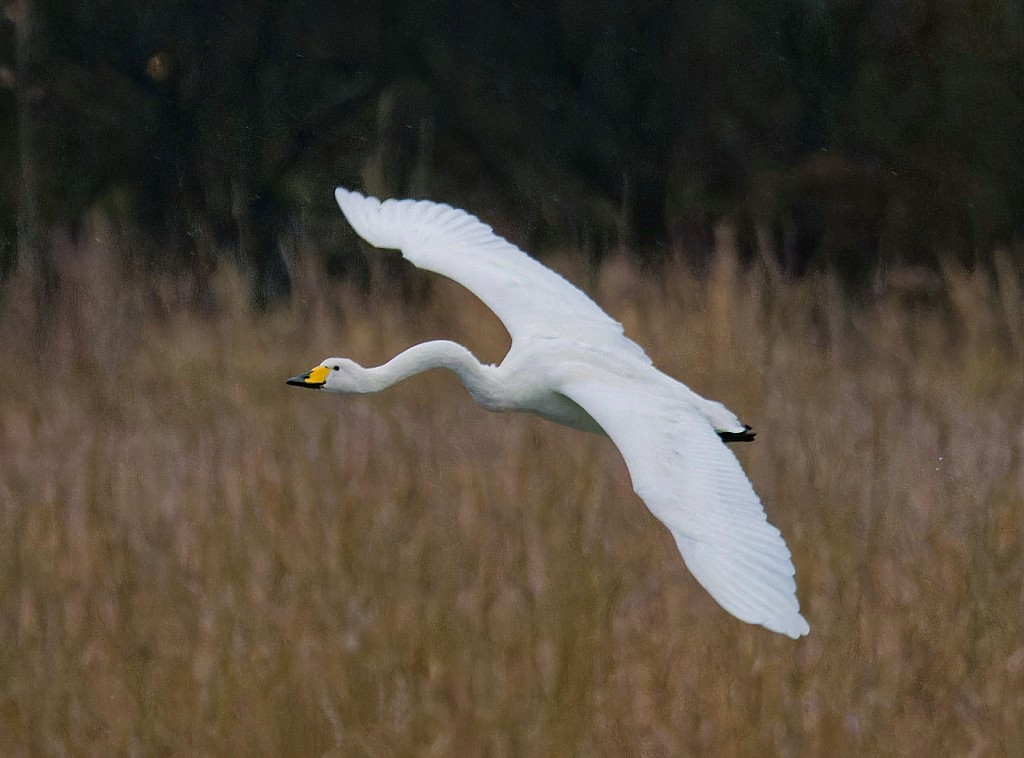Woolston Eyes Monthly Sightings
2024-12-17
Another productive morning sandwiching a meeting with our contractor, to discuss the Willow Tit coppicing programme on No.2 bed, between some birding sessions on No.4 bed. Early on a Whooper Swan dropped in with three Mute Swans. Unfortunately its neck was heavily kinked, a likely sign of having ingested lead shot, either from fishing weights of from shotgun pellets. It looked like the same bird which Dan Owen had found on Saturday, feeding on fields to the south of Butchersfield Tip. As well as the hundreds of more common wildfowl present, two Pintails and 3 Wigeon added to the variety, while Pochard numbers are slowly increasing, with 25 present. The long-staying Penduline Tit was also very active and has moulted to the point where it is showing a broad black mask and so is probably a male. Five Marsh Harriers were regularly interacting across beds 3 and 4 and we are hopeful of getting a second breeding pair next year. A passing Raven too exception to one of them and we were treated to a nice aerobatic display by them both. Photo of the Whooper Swan Cheers David Bowman (with Dan Owen and John Tymon)
Submitted by: David Bowman
2024-12-16
A European White Fronted Goose was with 3 Greylags on Number 3 bed. A bit distant for a decent Photo. 2 Marsh Harriers was present all morning and spooked everything, the bird flew off towards the river, I checked the river by the Weir but didn’t relocate it Cheers K Gallie
Submitted by: Keith Gallie
2024-12-15
It’s been a good week or so, with records including Merlin, Hen Harrier, Firecrest and the long-staying Penduline Tit again showing regularly. Yesterday was the December Wetland Birds Survey (WeBS) and though we were a bit short on counters, we ended up with a total of 3,231 “wetland birds”. Pick of the bunch were: 1 Whooper Swan, 1 Jack Snipe, 1 Woodcock, 27 Mandarins, 2 Green Sandpipers, 17 Snipe, 1 Goldeneye, 1 Goosander, 2 Pintail, 1 Pink-footed Goose, 29 Water Rails, 4 Kingfishers, 6 Shelducks, 209 Shovelers, 223 Gadwall, 247 Mallard, 15 Pochard, 343 Tufted Ducks, 319 Coot, 36 Little Grebes, 17 Great Crested Grebes, 58 Cormorants and 18 Grey Herons. As ever, when covering the whole of the Reserve, good counts of some other species were also made, including: 30 Lesser Redpolls, 5 Bramblings, 550 Chaffinches, 960 Linnets, 160 Stock Doves and 28 Chiffchaffs. Photo of a Grey Heron Cheers David Bowman (with Dan Owen and Helen Wynn)
Submitted by: David Bowman







